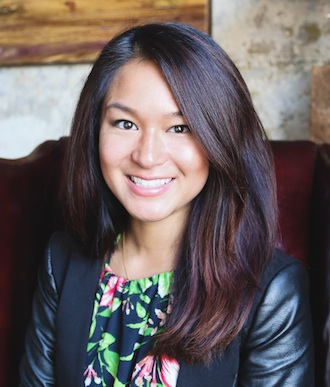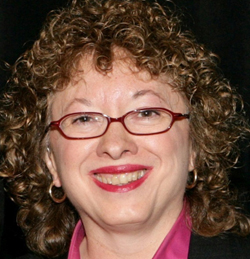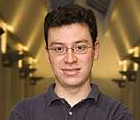But now, thanks to The GREEN Program, engineering students and others majoring in science, technology or math — and who have an interest in renewable energy technology — can have that study-abroad experience.
Founded by Melissa Lee and some friends when she was still a student at Rutgers University, the company takes students on excursions to countries that employ wind, hydroelectric, geothermal, solar and biofuel technologies, giving them an up-close look at those innovations while also offering a cultural experience they won’t soon forget.
The company’s work won them the 2014 Green Innovator of the Year Award from Greenfest Philly. And Lee, an enthusiastic 20-something originally from Queens, New York, has only just begun — if she has her way, the number of students studying abroad will soon be double what it is now.
What inspired you to found The GREEN Program?
I studied organizational and multicultural communication at Rutgers, so I’m fascinated with different cultures. I started the company right after my sophomore year, in 2009, when I was 19.
Three friends and I had the idea of traveling to Costa Rica. We went there and decided to check out some renewable-energy power plants. We figured out rather quickly that it was accessible, and that there were ways that we could start bringing students who had never had access to that kind of technology.
Students were sitting in classrooms studying this [field], getting master’s degrees, and teaching — years of classroom learning instead of getting hands-on access, actually getting their hands dirty in the field, and seeing what it’s about.
How did you get started?
Thinking back, I don’t know how we did it. It was a mix of hard work, being naïve and having nothing to lose. We got really excited and wanted to share an experience with students from all over the world. That was the motivation for us.
We won a business plan competition that got us about $1,000. We did online marketing using social media. We held an information session at Rutgers and got our first group of students to go on the trip to Costa Rica.
We were well connected within Rutgers; we started the Rutgers Entrepreneurial Society, which was the first entrepreneurial anything on campus [the school now offers an entrepreneurship minor]. We were well-versed in the university structure and bureaucracy, and we had great support from professors and from our organization. For the first trip we had 15 strangers, some of whom were older than I was. They were mostly students from Rutgers; one was from Drexel.
The first year we had about 150 students from 30 to 50 universities. We were running internships in the beginning to get free help in exchange for students getting work experience. We tried to be as resourceful as possible.
How has the business grown?
We’re now located at Impact Hub in the Fishtown area of Philadelphia. It’s a social-impact space, and we’re one of the founding members of the hub. There are Impact Hubs all over the world, and if you’re a member of one, you can pop into any one of them. The focus is on businesses with social impact. There are 15 companies here in an old firehouse. It’s a really fun environment.
We have six employees including myself. We work with the universities to recruit students. We have teams that we partner with overseas in each of our countries that are trained to run The GREEN Program.
We have evolved our program to be fully accredited, taught by world-class professors. We’re now in Iceland, Peru and Philadelphia. The Philadelphia program is focusing on bringing international students to the United States to study.
Our students are coming from 179 universities in 40 different countries. They’re meeting people from all over the world, and they’re finding out that many different people are working on the same problems, and they’re trying to discover how they can work together to make a stronger solution.
We have run about 50 trips, and we’ve had more than 1,000 students so far. In 2015, we’re looking [to enroll] about 700 to 800 students in our programs.
Everyone on our team has previously been a student in our programs.
What are the trips like?
Our programs take place in the best places in the world for students to get access to certain industries. Our pillars are education, adventure, culture and social impact.
For example, in geothermal energy, we partner with Reykjavik University in Iceland. One professor is actually the woman who designed the geothermal power plant that the students will see after the class.
The students are interdisciplinary, but they’re all learning the technological aspects of geothermal energy, and discussing what’s going on in the geothermal industry around the world.
Then we go to the power plant and get a full tour, with exclusive access to parts of the plant that the public never gets to see. They go through with engineers, and they can ask any questions they have ever wanted to ask. So the textbook is coming to life. You can see the lightbulbs go off in the students’ minds as they fully understand what they have been learning.
We top it off with adventure and cultural experiences. We’ll do a 13-mile hike through the canyons and mountains of Iceland; we’ll swim in naturally heated pools that are powered by that same geothermal area. They learn about it, experience it, see how it affects people’s lives, and enjoy it.
At night they work on Capstone projects, which are entrepreneurial endeavors. They can develop an idea that will have social impact, present it to the group, and come up with a business plan which they present in front of professors at the end of the program, to see if it’s feasible.
What has been the biggest challenge for you?
Getting access to all the universities and students who don’t know about us yet. Also, internal growth and figuring out how to be an entrepreneur every single day.
What’s the big differentiator for your company?
There are many programs for studying abroad out there, but I don’t think there’s another program that caters to students the way we do. Every step of the program is built with the student in mind, specifically the student leader who wants an internship, wants to study abroad, and wants to do something exciting, all in one summer — we allow them to do that.
We’re preparing them for job opportunities and giving them a professional network as well. We cater especially to students in the STEM fields, giving them the opportunity to study abroad that never really existed before.
What’s next for The GREEN Program?
What we really want to do is integrate ourselves into the university curricula. Our goal is to shake up education and create an awareness that students need to be studying abroad. We’re trying to work alongside universities to develop courses, embedding The GREEN Program as a course for credit. Starting next year, at some universities, students can sign up for The GREEN Program as a class, and have the cost considered part of their tuition.
Writer: Susan L. Pena

↑ Top


